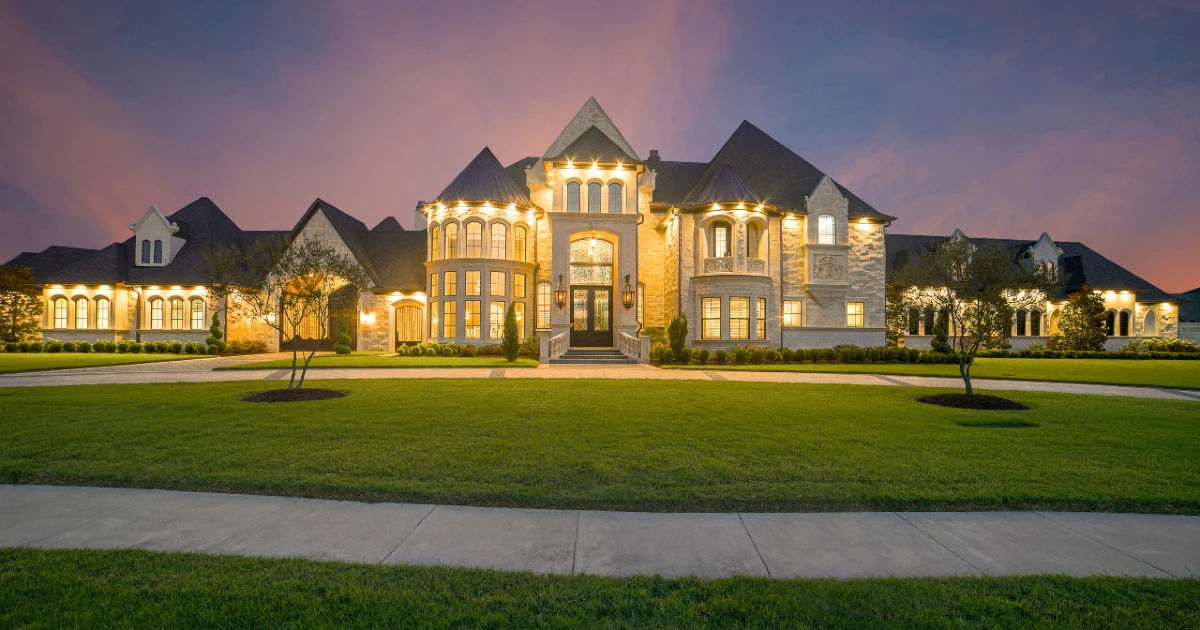Pittsburgh housing market analysis
In examining the Pittsburgh real estate market, recent data indicates a competitive landscape with steady growth. The following analysis provides insight into trends, median prices, and average values that are shaping the housing market dynamics in Pittsburgh.
Market trends overview
The Pittsburgh housing market trends and forecast for 2025 exhibit a consistent upward trajectory. A gradual increase in market performance is projected, with home values expected to rise by 1.1% by April 2026. This trend signals a strong market compared to the national average, as buyers and sellers navigate the evolving economic landscape.
Median sale and list prices
The median sale price of homes in Pittsburgh is particularly telling. Recently, homes boasted a median sale price of $242,300 in Q3 2025, reflecting a 2.9% increase from Q3 2024. Moreover, the median list price showed significant variance, reflecting the highly dynamic nature of the Pittsburgh real estate market that potential investors and homeowners must consider.
Average home values
When observing average home values, Pittsburgh’s market presents an interesting picture. The average home value is currently pegged at a competitive rate when juxtaposed with other markets, aligning closely with the median home value of $237,934. This value reflects the market’s stability and the growing interest in the region's residential properties.
Real estate inventory dynamics in Pittsburgh
Real estate inventory dynamics in Pittsburgh are characterized by the shifts between supply and demand, the fluctuating number of active listings and homes sold, and the trends seen in new construction.
Housing supply and demand
The Pittsburgh housing market has experienced changes in housing supply and demand. The supply tends to increase with new listings while demand is driven by various market factors including economic conditions and interest rates. A balance between supply and demand is crucial for a stable market. Periods of high demand and low supply cause upward pressure on prices, whereas the opposite scenario can lead to price stagnation or decline.
Active listings and homes sold
In terms of active listings, the market periodically adjusts with new properties coming up for sale. The number of homes sold reflects the health of the market. Pittsburgh has seen a pattern where periods of high inventory lead to more options for buyers, while low inventory periods typically favor sellers with more competition for available homes.
New construction insights
The sector of new construction provides insight into the housing supply. New construction impacts the number of homes for sale in Pittsburgh, contributing to the overall inventory. When new construction increases, it typically signals a response to high demand. Conversely, a slowdown in new construction often indicates a surplus in supply or a decrease in demand. Builders' confidence in the market can heavily influence the level of new construction activity. Inventory dynamics are a crucial aspect of the real estate market, affecting everything from individual investment strategies to the larger economic picture. In Pittsburgh, these dynamics can significantly influence the experience of both buyers and sellers.
Buying and selling in Pittsburgh
In Pittsburgh, the real estate dynamics offer distinct avenues for both buyers and sellers. With a firm grasp of market trends, potential buyers and real estate investors can navigate the buyer's terrain, while sellers can capitalize on their investment with an understanding of the current seller's stature.
Buyer's market insights
Buyers in Pittsburgh should note the median rent for all property types is comparatively lower than the national average, which may influence their budget considerations. The market has shown a 3% increase in rent prices over the last year, indicating a steady market. Moreover, the sale-to-list ratio and the time on market should be decisive factors for potential buyers; homes have been selling at a pace that suggests readiness for swift action is advantageous.
Key Points for Buyers:
- Budget Alignment: Pittsburgh's current median rent price.
- Market Activity: Recent year-over-year growth in rental prices.
- Strategic Bidding: Understanding of sale-to-list ratio.
Seller's market analysis
Sellers in Pittsburgh can glean from housing market reports that the inventory of homes was at 2,283 in February 2024, indicating a market that leans towards sellers. Homes are selling relatively quickly, so sellers might anticipate bidding wars if their property is priced competitively. The median listing home price has also seen a year-over-year increase, signifying a strong seller's market condition.
Key Points for Sellers:
- Inventory Levels: Number of homes available for sale.
- Competitive Pricing: Chances of inciting bidding wars.
- Profit Potential: Tracking the increasing median sale price.
Comparative market assessment in Pittsburgh
The Pittsburgh real estate market demonstrates unique characteristics when contrasted with national averages and affordability. This section will assess how the local market fares against broader metrics and the cost of living implications for residents.
Pittsburgh vs. national averages
Pittsburgh’s real estate landscape often presents more affordable options compared to the national average. While cities like San Francisco and New York see median home values skyrocket, Pittsburgh maintains a competitive edge with lower housing prices. According to Rocket Homes, the market had 2,283 homes for sale with an increase in inventory, suggestive of a buyer-friendly environment. In contrast, platforms like Zillow and Redfin often report higher national median prices, which highlights Pittsburgh’s position as a relatively affordable market.
Cost of living considerations
The cost of living in Pittsburgh indexes below the national average, making it an attractive location for those seeking affordability. The intersection of housing costs and overall expenses such as groceries, healthcare, and transportation, factors heavily into this equation. Data from Newmark indicates that the office market in Pittsburgh saw an increase in vacancy, which may correlate to shifting demands and a more negotiable market for potential homeowners and investors alike. This contributes to Pittsburgh's reputation for being an economically accessible city without sacrificing quality of life.
Neighborhood profiles in Pittsburgh
When examining the Pittsburgh real estate landscape, neighborhoods like Squirrel Hill North stand out for their unique market dynamics, while the metro area offers a broader look at regional trends.
Squirrel Hill North overview
Squirrel Hill North is recognized for its affluent residential character and top-rated schools. Property values in this neighborhood often reflect its status as one of Pittsburgh's most desirable areas. The local market is characterized by a mix of historically grand homes and newer, upscale developments.
Metro area highlights
The Pittsburgh metropolitan area, inclusive of Allegheny County and surrounding regions, showcases a diverse real estate market. From the bustling urban neighborhoods to the serene suburban communities, the metro area provides a wide array of housing options. Economic growth and redevelopment initiatives continue to shape the area's housing demand and market values.
Market influences
The Pittsburgh real estate market is shaped by economic performance and demographic trends. Critical drivers include population fluctuations, median household income, and unemployment rates, which are essential to investors and homeowners alike.
Economic factors
Pittsburgh, traditionally known as Steel City, has transitioned from an industrial hub to a more diversified economy. This shift has altered the housing market landscape significantly. For instance, the median household income in the area can provide insight into purchasing power and the health of the local real estate market. Moreover, the unemployment rate is a crucial indicator. A lower unemployment rate often correlates with increased demand for housing, as more people can afford to buy homes.
Demographic shifts
Demographics are also central to understanding the Pittsburgh housing market. Population changes, captured by the census, reflect the city's attractiveness and potential for growth. An increasing population generally leads to higher demand for homes. Conversely, a declining population can result in a surplus of housing and downward pressure on prices. Recent years have seen a demographic shift in response to the pandemic, as people seek out areas with more space and perceived safety, potentially impacting demand in the Pittsburgh region.
Investment opportunities in Pittsburgh
Pittsburgh presents a landscape ripe with investment opportunities, particularly in the realms of rental properties and market growth potential. Real estate investors considering Pittsburgh can benefit from stable returns and a growing metropolitan market.
Rental property market
In Pittsburgh, the rental market is robust due to the city's affordable cost of living and substantial number of higher education institutions, which drive steady rental demand. Properties in neighborhoods such as Carrick appeal to investors with their reasonable median sale prices and solid renter occupancy. Homes in these areas make profitable rental properties, especially given the region’s popularity and the local quality of life which continues to attract new residents.
Forecasting market potential
Current market trends indicate a positive trajectory for the Pittsburgh real estate market. Predictions forecast a gradual increase in market performance, with expected rises in both property value and rental rates. For example, a significant rise to 2.8% by January 31, 2026, in housing market performance is anticipated. Real estate investors can capitalize on these trends when choosing homes to add to their investment portfolios, positioning themselves for potential long-term growth.
Financial considerations in Pittsburgh
When considering the Pittsburgh real estate market, prospective buyers should be attentive to mortgage rates and financing options. They should also explore assistance programs and grants that aim to make homeownership more attainable.
Mortgage rates and financing
Mortgage rates inherently affect the affordability of homes in Pittsburgh. As of March 2023, with median home prices around $217,000 and interest rates fluctuating, it is essential for buyers to secure competitive mortgage rates to ensure manageable monthly payments. The cost per square foot and median rent also play a role in determining whether to buy or rent. Buyers require up-to-date knowledge of rates and an understanding of pre-approval processes to navigate financing successfully.
Assistance programs and grants
The Pittsburgh housing market is supported by various assistance programs designed to help buyers, especially first-timers, transition into homeownership more smoothly. These programs offer benefits like down payment assistance and subsidized interest rates which are invaluable for buyers facing budget constraints. Grants may facilitate the ownership of homes with higher square footage or in preferred neighborhoods. Touching base with local housing authorities can elucidate which grants or assistance programs potential homeowners qualify for.
Additional market insights
The following insights provide a more granular look at the Pittsburgh real estate market, with a focus on current foreclosure statistics and market stress indicators that could influence investors and prospective homeowners.
Foreclosure statistics
In recent quarters, Pittsburgh has experienced a shift in its foreclosure landscape. The number of properties entering foreclosure has remained relatively stable, with fluctuations attributed to economic factors and legislative changes impacting homeowner liability. For example, as of the fourth quarter of 2023, Pittsburgh's foreclosure rates were below the national average—a testament to the market's resilience.
Market stress indicators
Market stress indicators serve as a barometer for potential issues in the real estate market. One such indicator is the ratio of housing prices to local incomes, which underscores the affordability challenges that residents may face. Additionally, the volume of distressed properties—those in short sales or bank-owned—can trigger stress within the market, often leading to increased liability for financial institutions. However, Pittsburgh's market has shown signs of stability with a gradual uptick in prices over past years.
Local amenities and lifestyle in Pittsburgh
Pittsburgh's landscape is rich with a mixture of educational institutions and diverse recreational and cultural amenities that cater to residents and visitors alike. It boasts a blend of history, energy, and innovation along the banks of the Ohio River, offering a lifestyle that's both dynamic and enriching.
Colleges and universities
Pittsburgh, PA, is a hub for higher education, with a significant cluster of colleges and universities contributing to the city's vibrant atmosphere. The University of Pittsburgh and Carnegie Mellon University are prominent institutions that draw students from all over the globe, enhancing the city's intellectual capital and energy. These universities are not just educational facilities but also major employers and contributors to Pittsburgh's economy. They foster research, innovation, and growth, making the Steel City a noteworthy educational epicenter.
Recreational and cultural offerings
When it comes to recreation and culture, Pittsburgh doesn't disappoint. From the verdant trails along the Ohio River to the cultural experiences provided by institutions like the Pittsburgh Symphony Orchestra and the Pittsburgh Ballet Theatre, the city offers a plethora of activities. Residents can explore the extensive collection at the Carnegie Museum of Art or catch a competitive sports game with the city's beloved teams, the Steelers, Pirates, or Penguins. Moreover, the city celebrates its industrial heritage while simultaneously embracing sustainable energy practices, which can be observed in the green spaces and refurbished historical buildings throughout the area.
Frequently asked questions
This section addresses common inquiries regarding the Pittsburgh real estate landscape, including market trends, past fluctuations, future predictions, and factors affecting affordability in 2025.
What are the current trends in the Pittsburgh housing market for 2025?
The Pittsburgh housing market is experiencing a notable upward trend in median sale prices, with figures climbing from early 2023 into 2025.
How has the real estate market in Pittsburgh been affected by the recent market fluctuations?
Recent fluctuations have seen Pittsburgh's real estate market demonstrating a varied pattern, with prices witnessing both an increase and a decrease over the past months, reflecting a dynamic market environment.
What are experts predicting for the future of real estate prices in Allegheny County?
Experts are foreseeing a continued escalation in median sale prices across Allegheny County as inventory constraints persist, according to insights from Houzeo reports.
Is there a projection for a housing market crash in Pittsburgh?
There are no explicit indications or projections of an upcoming housing market crash in Pittsburgh; however, it is critical to monitor ongoing market dynamics closely.
What factors are contributing to the affordability of Pittsburgh real estate?
Pittsburgh's real estate remains relatively affordable due to factors like employment rates and a cost of living that is below the national average.
How have Pittsburgh house prices changed over the past year?
Throughout the last year, Pittsburgh's house prices have exhibited variation, with periods of decline and others of month-over-month increases, indicating a somewhat volatile but generally appreciating market as reported by Redfin data.






.png)
.jpg)
.jpg)


.png)